Media | Articles
2024 Corvette E-Ray Revealed: 655-hp, AWD hybrid is the quickest Vette ever
Thus far, the eighth-generation Corvette has been defined by a number of firsts. It’s the first production Vette with a mid-engine layout. The first to offer a dual-clutch automatic transmission. And, in the Z06, the first Corvette V-8 with an exotic flat-plane crank. With the 2024 Corvette E-Ray, we can tack a few more firsts onto the list: first hybrid Vette, first with all-wheel drive, and the first to hit 60 mph in 2.5 seconds.
“In 1953, the enthusiastic reaction to the Chevrolet Corvette concept kicked off seven decades of passion, performance and American ingenuity,” said General Motors president Mark Reuss. “E-Ray, as the first electrified, all-wheel-drive Corvette, takes it a step further and expands the promise of what Corvette can deliver.”
(To get a sense of just how special the E-Ray is, we sat shotgun with the E-Ray lead development engineer on an enlightening, tire-smoking thrill ride around a skidpad at GM’s Milford Proving Grounds. Please click here to read about that ride-along experience.)
If you’re here for the hard numbers, wait no more. Here’s everything we got from our visit to Milford:
Powertrain
Let’s start with the known quantity, the LT2 V-8. It’s essentially a carryover internal combustion engine (ICE) from the Stingray Z51, making 495 hp and 470 lb-ft of torque, delivered to the rear wheels via the same Tremec eight-speed dual-clutch automatic transmission and electronic limited-slip differential.
Marketplace
Buy and sell classics with confidence
Up front is the electrified drive axle, completely decoupled from the rear. A single permanent-magnet electric motor directly drives front wheels via an open differential. There is no plug-in functionality. Drawing energy from the 1.9-kWh lithium-ion battery, the motor can provide up to 160 hp and 125 lb-ft of torque. Combined with the gas engine, that’s a total system output of 655 hp—15 fewer than the Corvette Z06. Engineers chose this type of drive unit, rather than, say, in-wheel electric motors, for its packaging efficiency as well as its functional simplicity.
The battery is a pouch type, with 80 cells divided evenly into 4 modules (20 cells per module). All battery components are housed within the Corvette’s central tunnel—an aluminum backbone for the space frame that, aside from cooling hardware running through the top, is empty in the Z06 and Stingray. This is but one example of how the E-Ray was, from the get-go, planned as part of the C8 Corvette’s development.
LG makes the battery cells, which are packaged and assembled at GM’s Brownstown, Michigan battery plant. While the Ultium cells that are used in GM’s EVs are designed for large storage and long-range, the E-Ray’s battery is small and optimized for in-and-out power flow. Using a power inverter that also fits neatly inside the tunnel, the electric motor can serve as a generator to charge the battery during coasting and other driving situations. (There are six driving modes, one of which is called Charge+ and focuses on feeding the battery.) Regenerative braking also aids in battery charging.
The electric front axle can propel the Corvette E-Ray at speeds up to 45 mph, at which point the V-8 will fire, bring up the rpm to match speed, and the transmission will engage to ensure a smooth addition of torque. The process takes a couple of seconds. The V-8 will kick on before 45 mph if the driver requests more than 30 percent throttle or 1.5 g of acceleration, or if the HVAC system is manually activated. The front axle can work in concert with the LT2’s cylinder deactivation, which means highway efficiency can be maximized with four-cylinder hybrid power.
In so-called Stealth Mode, which exclusively uses the front axle, the E-Ray has about 4 miles of all-electric range.
eAWD
While quiet start-ups that don’t annoy neighbors are helpful, and pure-EV capability at city speeds will make the E-Ray usable in European cities that ban downtown emissions, those are not the only reasons GM built the E-Ray. Corvette engineers insist that the combination of all-wheel drive and on-demand torque makes for a special, approachable high-performance sports car experience, to say nothing of the increased capability and control in foul weather.
According to Lead Vehicle Development engineer Mike Kutcher, the main advantage of the electrified front axle is its ability to pull the E-Ray out of a curve. “We tuned it to behave and feel primarily as a rear-wheel-drive car on corner entry and in the mid-corner, settled properly with our eLSD tuning,” Kutcher noted. “Then, with the rear hung out, you can call on the front axle for the torque to power out of the curve.
“What some manufacturers are doing on the ICE output shaft, we do via controls on the front axle. We took this approach for the modularity benefit, and to do it we have to use advanced propulsion controls.”
There is no clutch on the front axle, so the E-Ray uses brake-based torque vectoring there instead. The software’s different drive modes allow for varying degrees of yaw on the rear axle, but as the rear end loses stability the E-Ray will shift the percentage of torque the driver requests to the front axle. Using a combination of data such as speed, acceleration request, steering angle, and available traction (friction coefficient), the car’s software can determine where it thinks the driver is trying to point the car.
As Lead Performance Engineer Bill Wise explained, the hybrid system provides additional composure that is noticeable on any surface. And on a road course, it’s no less capable than the Z06: “The E-Ray was never slated as an out-and-out track car, but we’ve put just as much track work into it in development. It is as capable as the Z06 around a race track. But the front axle allows us to reduce some compromises; we can improve stability, for example, by leaning on that front axle … and not only is it fast, but the peak is so broad that you can throw the average customer into it and not have them in over their head.”
Wise also said that the E-Ray is “a champ” in the snow. Using the same dedicated winter tire as the Z06, the E-Ray turns into a “rocket ship,” but the standard all-season tire is no joke, he said. “This car does things in the snow you wouldn’t imagine the Corvette would be capable of. Where an average car on our snow circle would do 45-55 mph, the E-Ray will do 75-80. It’s almost scary.”
Chassis
The E-Ray shares its wide-body proportions with the Z06, meaning it sits 3.6 inches wider than the Corvette Stingray. It shares the Z06’s wheel and tire size: staggered 20 x 10-inch wheels with 275-width tires up front and 21 x 13-inch rears with 345-width tires. Standard fitment is the Michelin Pilot Sport all-season tire, wrapped around five-spoke wheels unique to the E-Ray. The Z06’s Michelin Pilot Sport 4S summer tire is available as part of an optional performance pack, which also unlocks carbon-fiber wheel options and a taller wicker bill for the rear decklid.
Weight savings was a big focus on the E-Ray. Brembo-brand carbon-ceramic brakes are standard, the electric drive unit case is made of magnesium and held together with aluminum fasteners, and the 12-volt combustion engine battery is a lighter, lithium-ion unit. It weighs 3774 pounds, or about 265 pounds more than the Z06.
“Considering the performance enhancement of all wheel drive as we’ve done it here, compared to if we did it in a conventional mechanical way, that is certainly very light,” said Corvette Chief Engineer Josh Holder.
The electrified front axle effectively shifted overall weight balance forward by 1 percent, to 41/59 front/rear. The battery is structurally integrated into the chassis, and the bottom of the pack is reinforced with an aluminum plate—rather than the carbon-composite piece in other Corvettes—for extra rigidity.
The E-Ray suspension features specific spring rates and roll rates. “It’s to help react to the added front mass and optimize the tire contact patch,” explained Holder. The standard Magnetic Ride Control (MR 4.0) feature three distinct settings but is generally tuned softer than the Z06 and firmer than the Stingray Z51, but closer to the latter on that spectrum. The stabilizer bar tuning is common in the rear, and only slightly different up front.
Wherever possible, the Corvette team sought to minimize changes compared to the Z06. If something required adjustment it got it, but engineers maintained an “if it ain’t broke, don’t fix it” approach to the E-Ray chassis. On the front control arms, for example, the bushings are identical but the geometry had to be slightly modified to make room for the drive axle. This resulted in a slightly taller shock cap, which engineers compensated for with a unique “tower-to-tower” brace made from aluminum. The brace, they say, adds stiffness and improves down-the-road feel through the steering wheel.
Design
Aside from the subtle changes to the front grille, plus some web-like bumper inserts in the space between the taillights and rear diffuser, the E-Ray sports a mix of Stingray and Z06 cues. While the body shares its footprint and overall shape with the Z06, the square-tip quad exhaust has the same layout as the Stingray.
The E-Ray will have four finishes for its aluminum wheels, three finishes for the carbon wheels, fourteen paint options (including the new-for-2024 Riptide Blue, Seawolf Gray, and Cacti), and a model-specific Electric Blue stripe package. Inside it’s more familiar fare, but the E-Ray’s debut does bring with it a new Artemis Dipped interior, which reads in person like a greenish gray and will only be available on 2024 Corvettes.
The only differences to the E-Ray cockpit compared to other Corvettes are the unique power output and electrical system efficiency display modes, as well as the physical button on the driver’s side of the center tunnel. The button can change the drive mode to Charge+ on demand, making it easy to ensure the battery is charged up for later use.
How it stacks up
In terms of price, the E-Ray sits in the Corvette lineup pretty much right alongside the Z06, which starts at $106,395. The E-Ray 1LZ coupe starts at $104,295, while the 1LZ convertible starts at $111,295.
Engineers told us that the E-Ray is more of a corollary to the Z06 than it is positioned below it, though the latter car is unquestionably more of a scalpel on the track. Here’s Bill Wise, performance engineer, on how he sees the difference:
“The E-Ray is incredibly approachable. Because we’ve got the big, wide tire package from the Corvette Z06, it means a lot of added capacity from a mechanical grip standpoint. More so than you’d have on the Stingray, but then you don’t have quite the Z06’s power. The performance peak ends up being really broad, which means you can drive the E-Ray up on the peak of the tire for a long time.”
If this sounds a bit like the Corvette Grand Sport from the outgoing C7 generation, which combined the Z06’s chassis with the Stingray’s V-8, you’re not far off the mark. But without a doubt, the hybrid component brings a new dimension to Corvette performance.
Kutcher, the E-Ray’s lead development engineer, said it best: “We took what’s already great about the Stingray and asked how we could make it better. What we got is the quickest Corvette ever, all-wheel drive capability, electrification—a totally different kind of step up. A totally different car than the Z06, and still a Corvette.”
The E-Ray goes on sale this year—precisely when, GM is not saying. We can’t get behind the wheel soon enough.



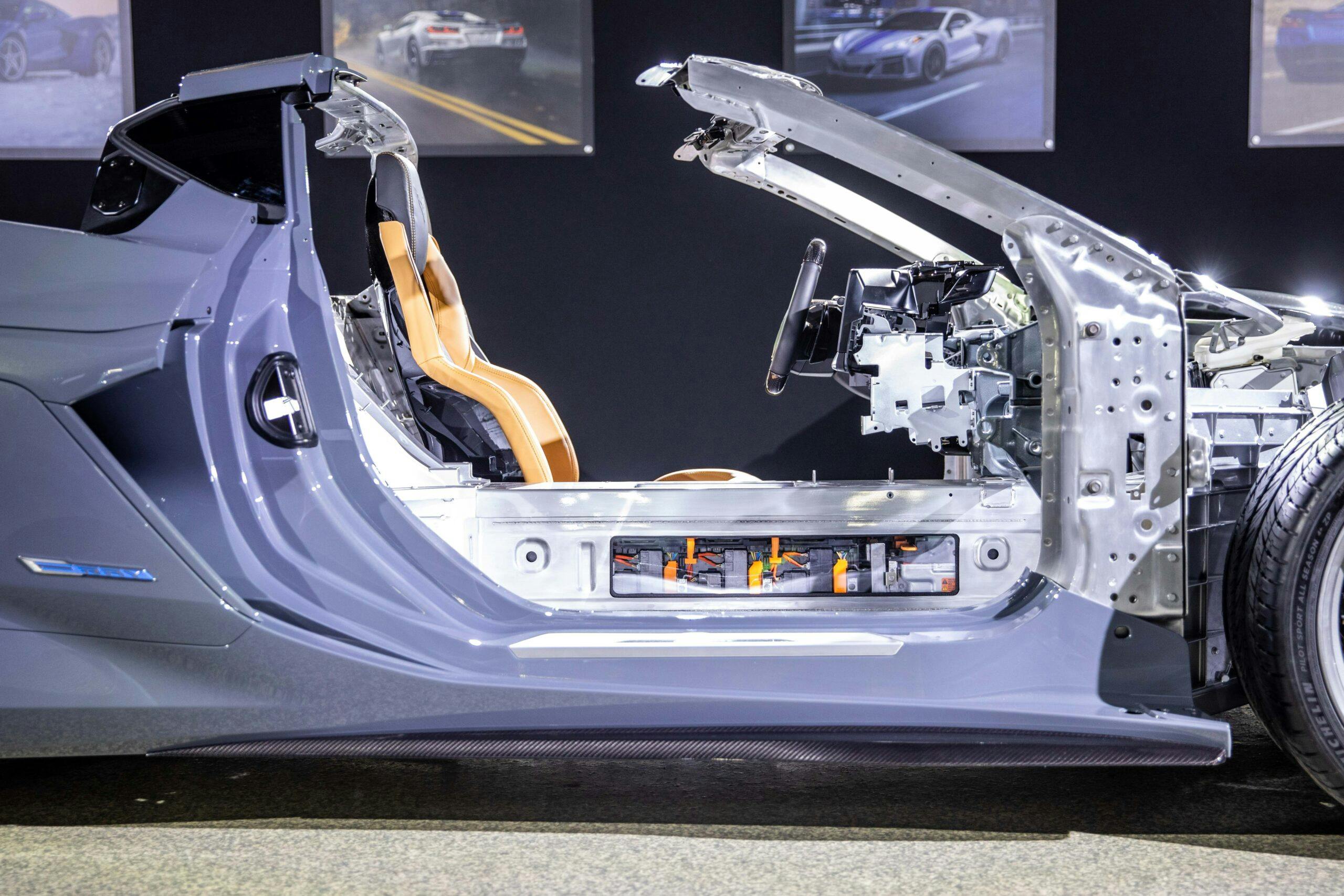




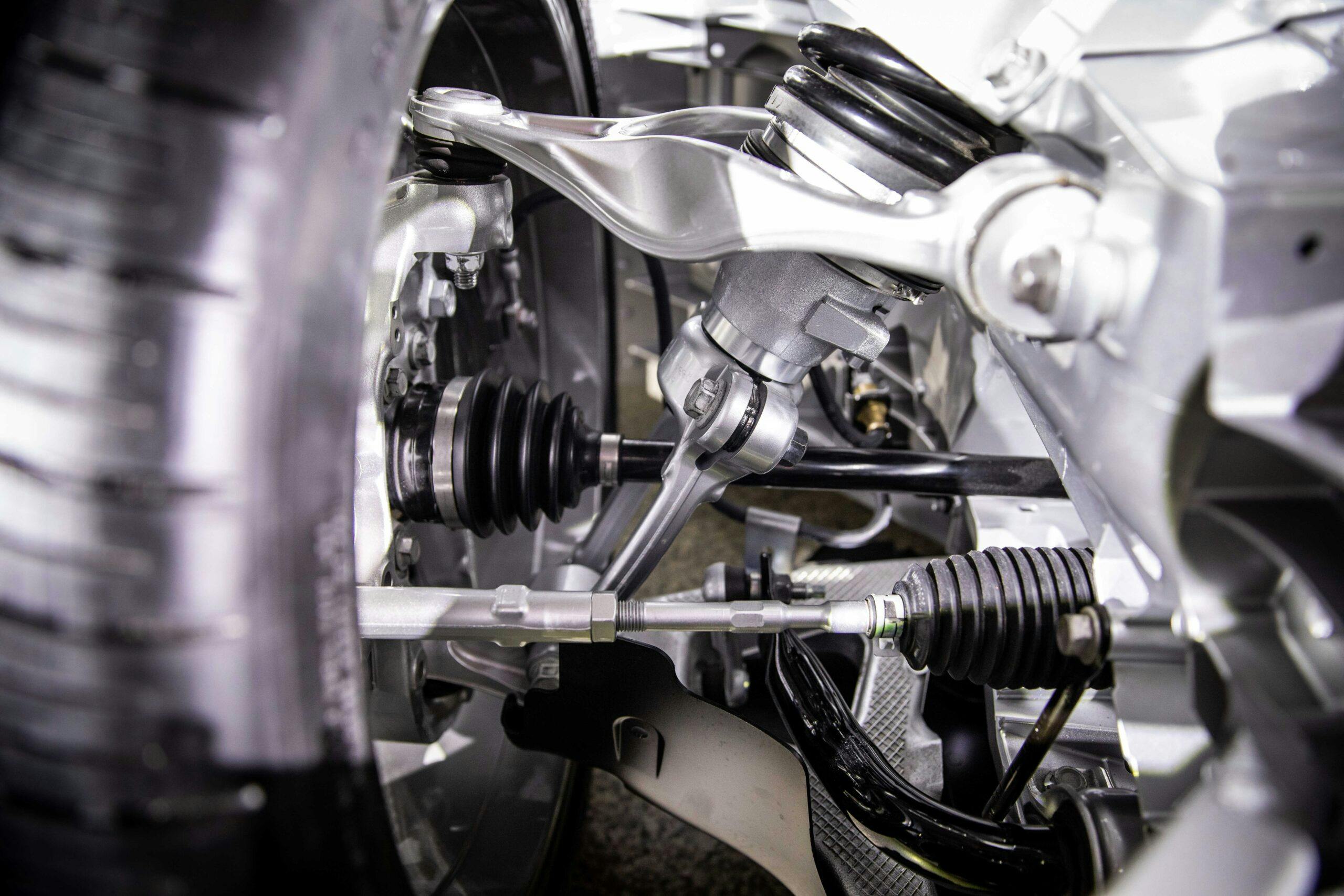






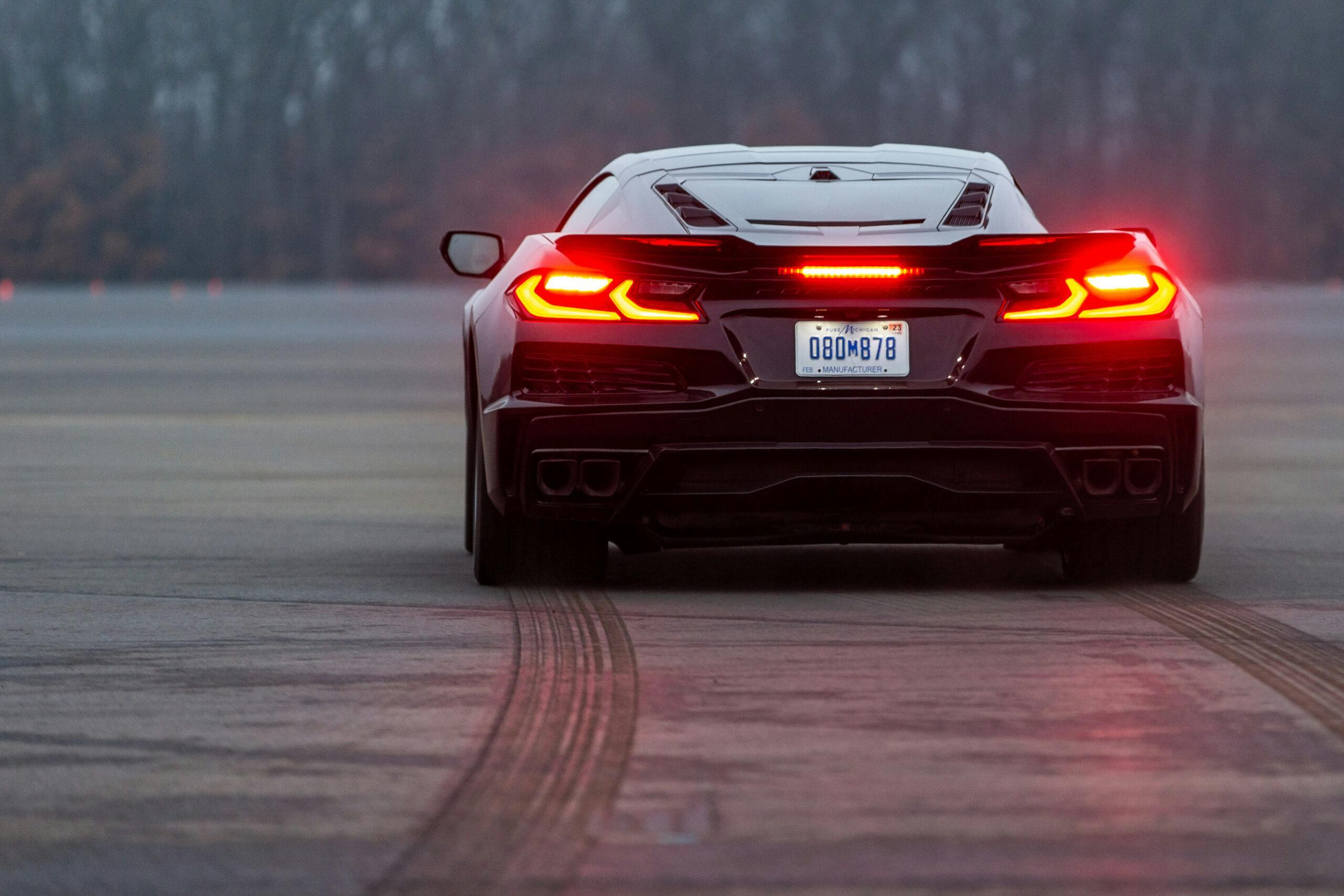

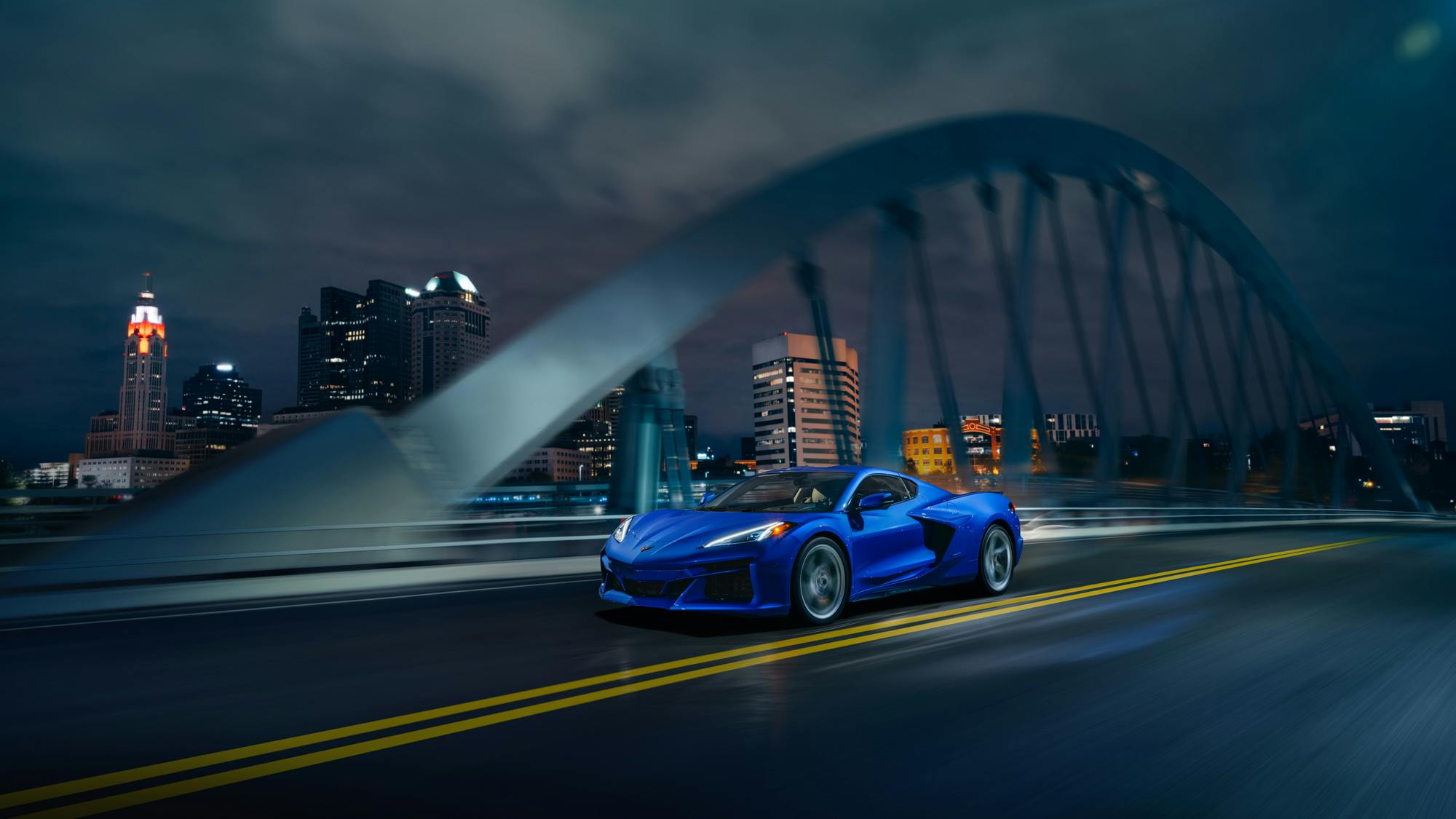

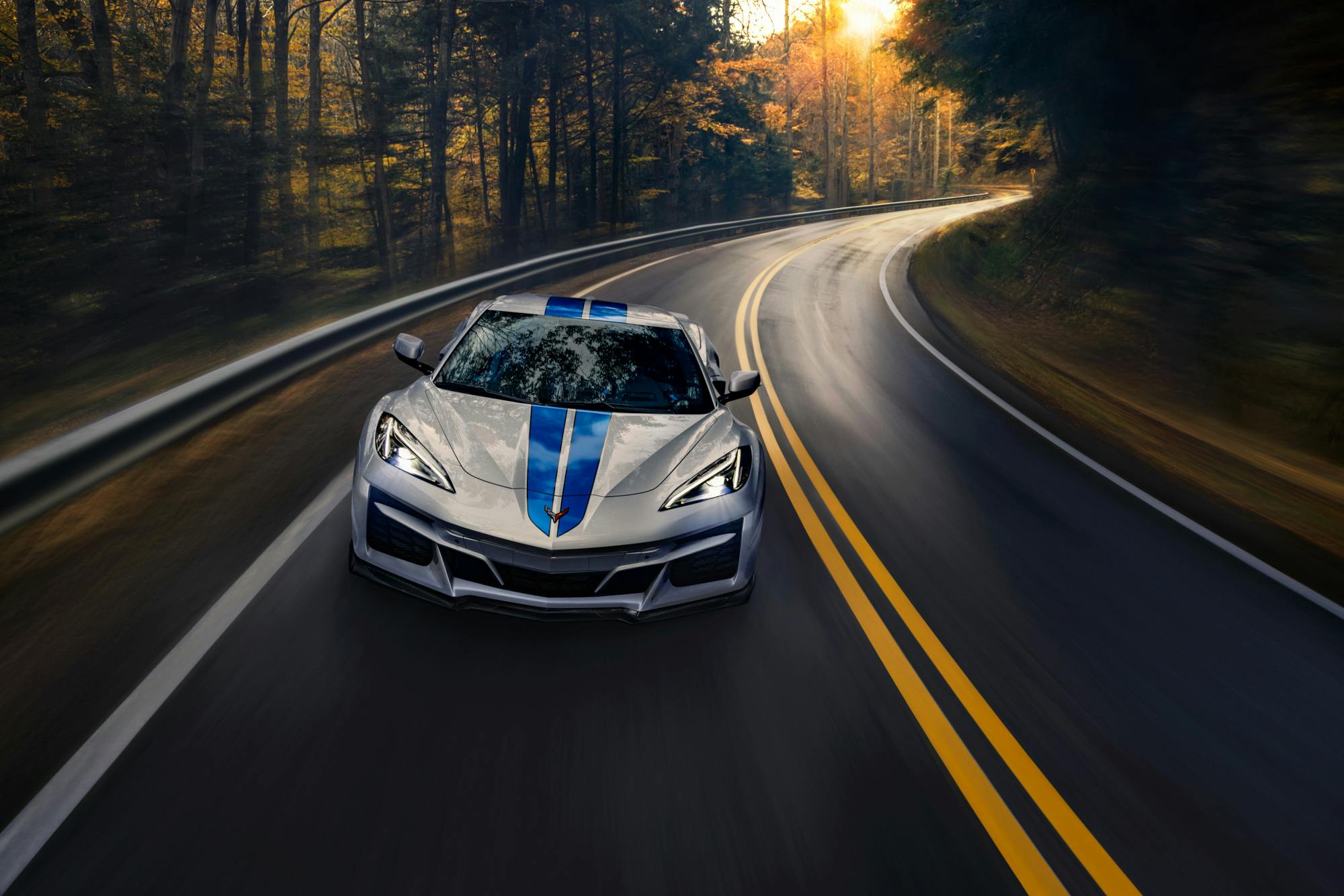











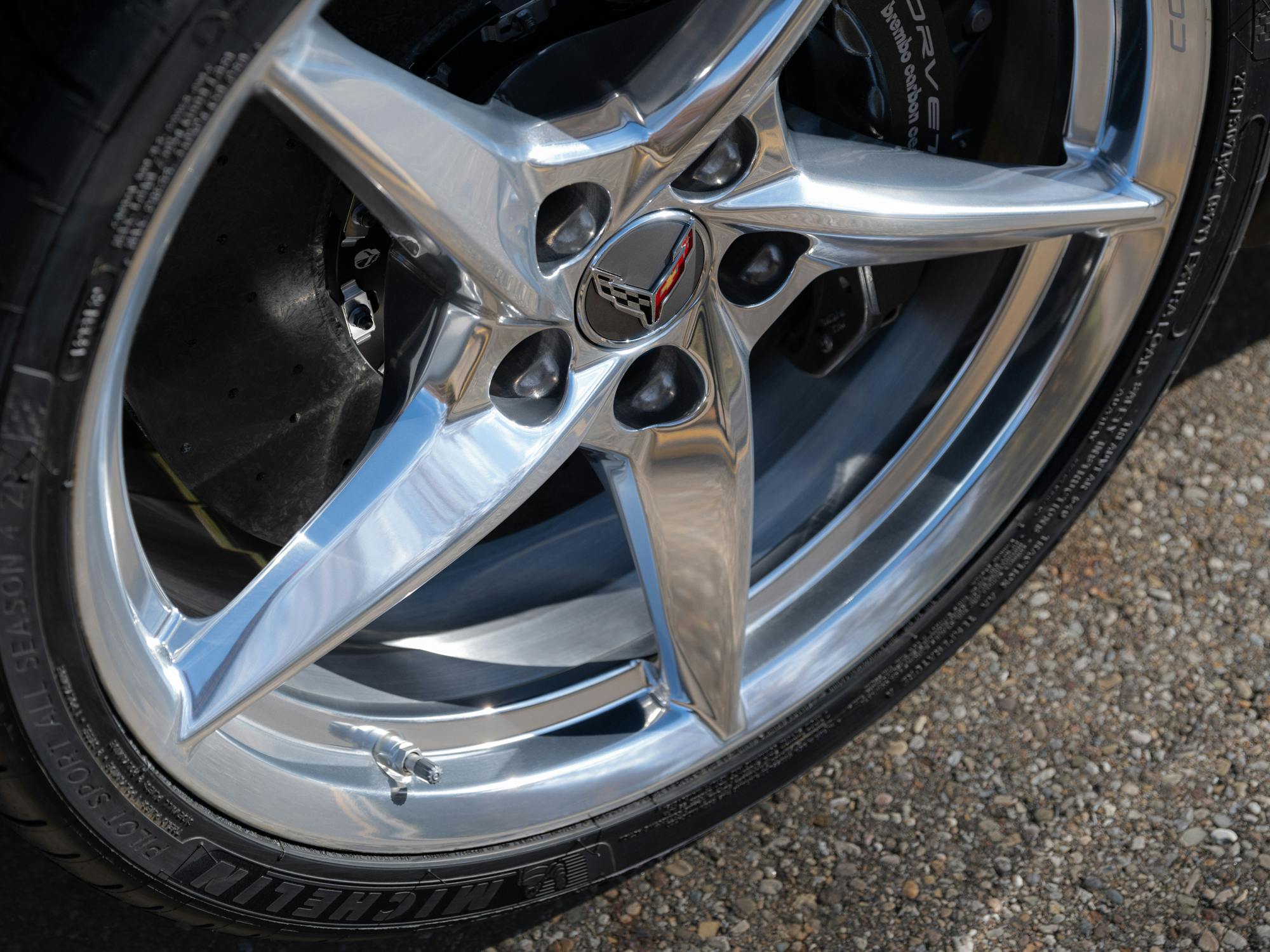






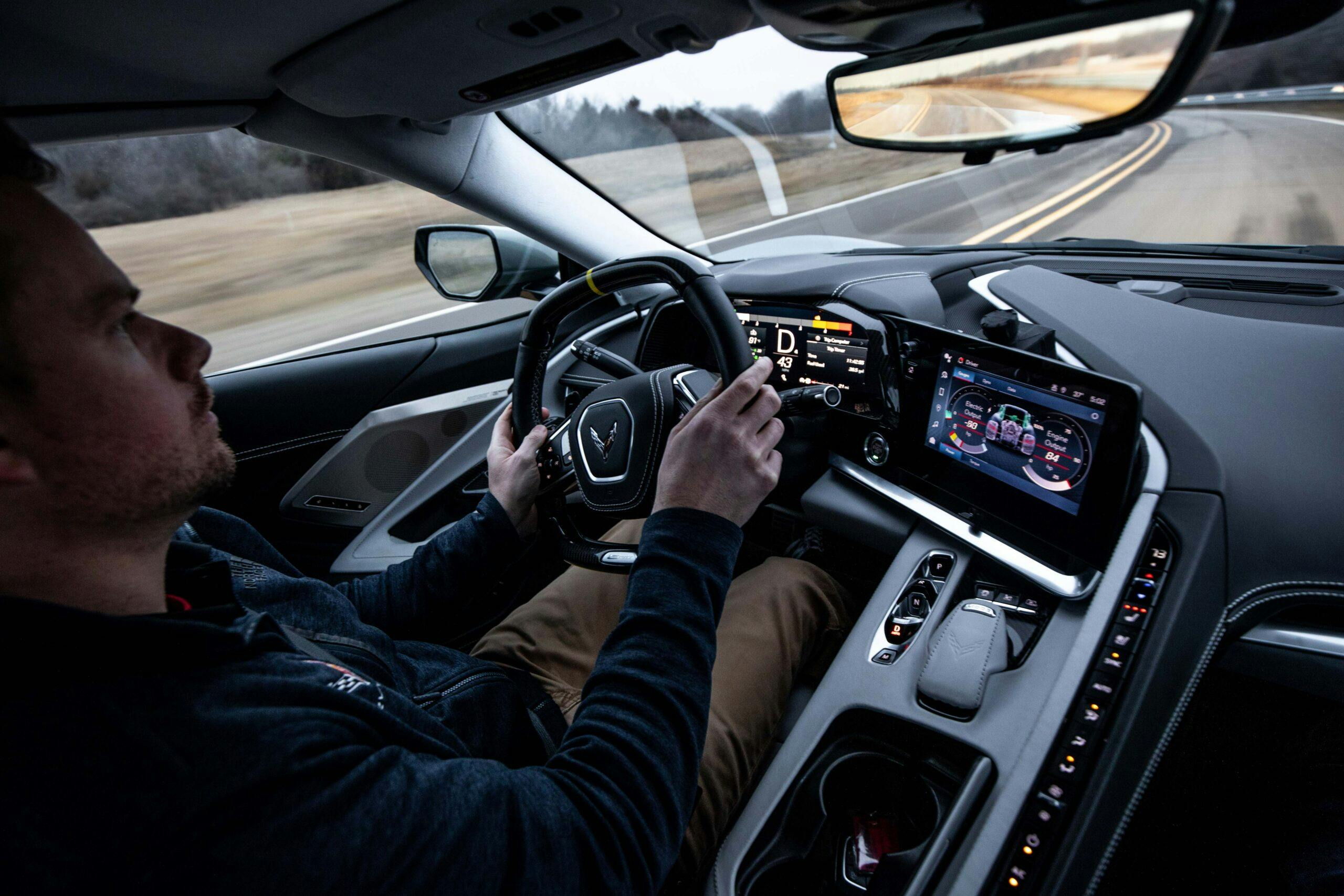
















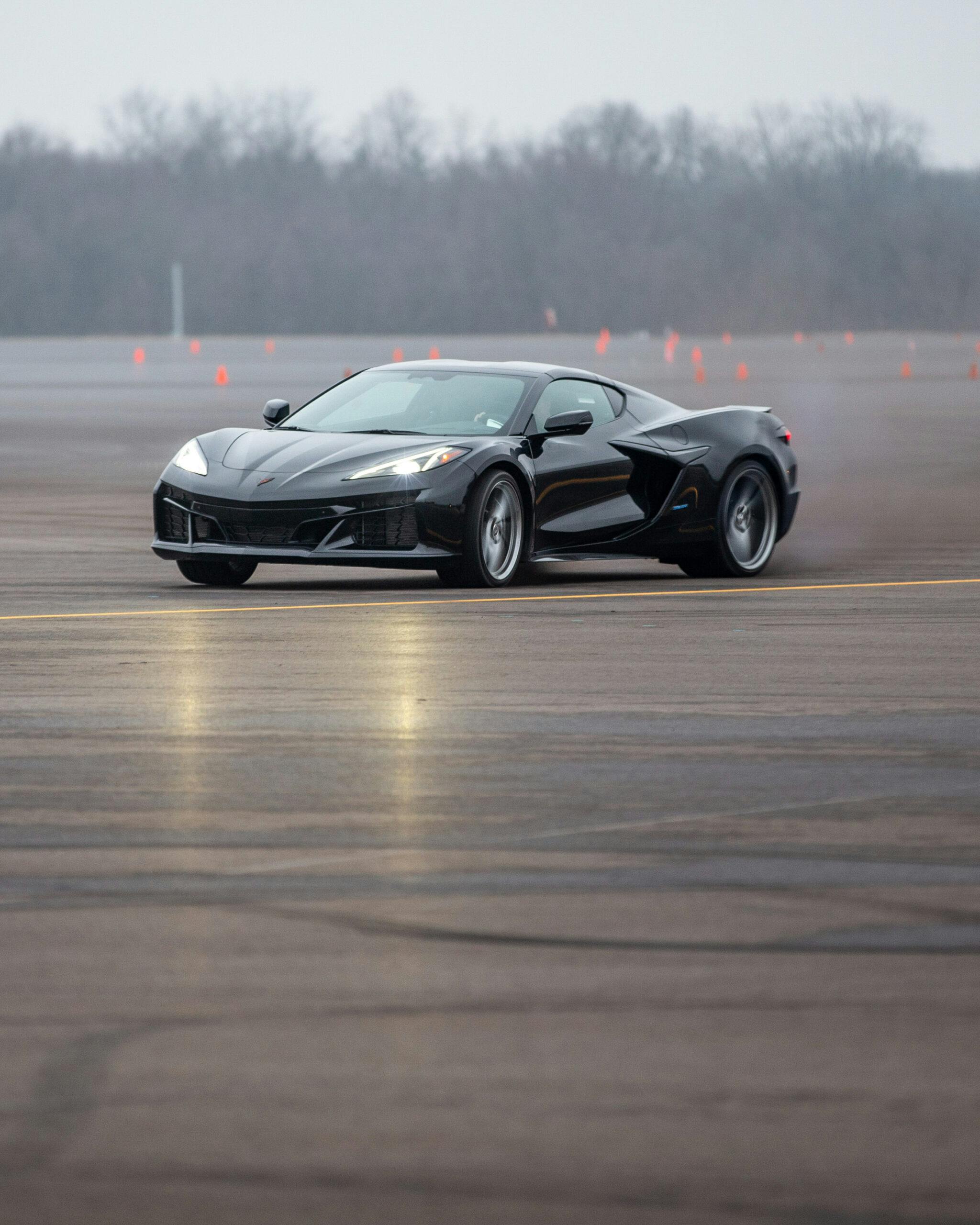






































































The first Corvette, in 1953, didn’t offer a manual transmission, so this isn’t the first.
Correct! And neither did the 1982.
Redacted! I had meant generationally speaking, but regardless I stand corrected.
Wow! All that techno wizardry! What could go wrong?
Nothing that a Jiffy-Lube tech couldn’t fix.
I’m curious how this compared to the now dead Acura NSX.
Well: 3.5L V-6 with twin turbo vs. NA 6.2L V-8; 9spd DCT with hybrid drive on rear plus two motors up front vs. 8spd DCT just for ICE and single electric motor on front wheel. 573 hp vs 655. Having driven the NSX and just ridden in the E-Ray, the latter launches WAY harder.
The base model stingray accelerates harder than the NSX so there is no contest with the E-Ray
“The V-8 will kick on before 45 mph if the driver requests more than 30 percent throttle or 1.5 g of acceleration…”
Ummm… accelerating at 1.5 g is equivalent to a 0-60 time of 1.8 seconds, so if the driver requests more than 1.5 g of acceleration then, it doesn’t matter if the engine is running, they aren’t going to get it!
In so-called Stealth Mode, which exclusively uses the front axle, the E-Ray has about 4 miles of all-electric range. That has to be a record. I will stick with the Z06.
Really? It’s stealth mode is good for zero miles
I’m disappointed in so many negative comments. This is Ferrari territory at a fraction of the cost. The engineering is incredible and the end result is spectacular. My true love is the C2 but that’s just me. You can’t stop progress. We’ll done GM!
I’m not even in the target market but I’m excited for the marque. Not mentioned here yet: a goofy touch screen doesn’t dominate the dash (surely a hard fought victory in itself) and the origami aesthetics have been minimized. There will be the inevitable sour grapes comments about toasters from those who resent anything new but I’m looking forward to these things humiliating foreign exotics at a tenth (or less!) of the price.
2022 Stingray 3LT sitting in garage with 1,264 miles on it. My hunger is looking very hard at time to trade/test the 2024 beauty GM has built !!!!!!